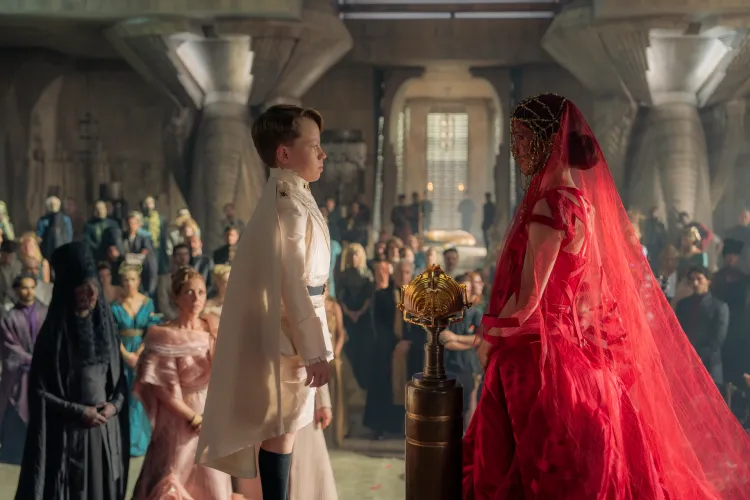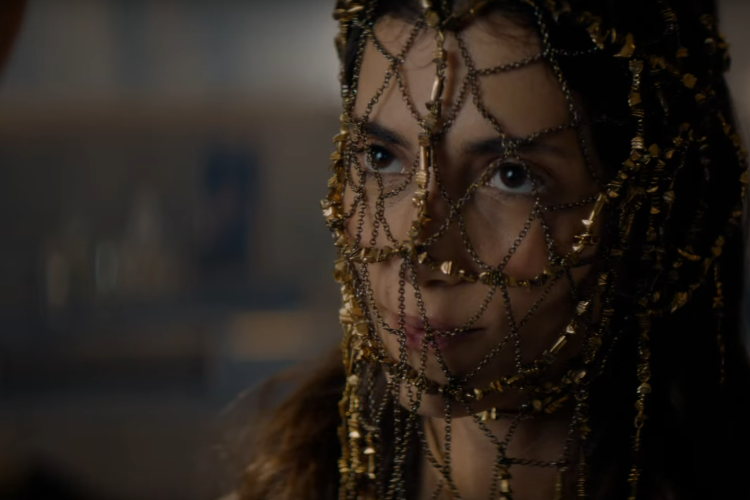The Dune universe, created by Frank Herbert, has long captivated audiences with its intricate world-building and political intrigue. HBO’s latest venture, Dune: Prophecy, takes a bold step into the past, offering fans an opportunity to explore the origins of this sprawling sci-fi saga. Set 10,000 years before the events of Dune, the prequel series centers on the formation of the Bene Gesserit sisterhood and the aftermath of the Butlerian Jihad, an AI-driven conflict that reshaped humanity’s trajectory.
Also Read : Sarah-Sofie Boussnina Net Worth

Exploring the Prequel’s Setting
HBO’s Dune: Prophecy distinguishes itself from the blockbuster films helmed by Denis Villeneuve. While the movies focus on Paul Atreides’ rise on Arrakis, Prophecy delves into the foundations of the galaxy’s societal order. The show draws inspiration from the Great Schools of Dune trilogy, authored by Brian Herbert and Kevin J. Anderson, which chronicles humanity’s recovery from the AI-dominated era.

The Butlerian Jihad serves as the backdrop for Prophecy, detailing the rebellion against sentient machines. This pivotal moment reshaped human civilization, leading to the banning of AI and the rise of specialized human institutions like the Bene Gesserit, Mentats, and Spacing Guild. The series offers viewers a glimpse into how these factions developed and influenced the balance of power across the known universe.
Key Characters and Plotlines
At the heart of Dune: Prophecy are the Harkonnen sisters, Valya (Emily Watson) and Tula (Olivia Williams). These characters spearhead the early stages of the Bene Gesserit sisterhood, a clandestine group whose influence permeates the Dune saga. Their journey reveals the sisterhood’s initial struggles to establish dominance in a fractured galaxy still reeling from the Butlerian Jihad.
Joining the cast is Danish actress Sarah-Sofie Boussnina, known for her roles in The Bridge and Knightfall. Boussnina’s character brings a new dimension to the series, bridging the gap between emerging schools of thought in the Dune universe. Her portrayal emphasizes the cultural diversity and ideological conflicts shaping the early Bene Gesserit.
The narrative of Prophecy intertwines political maneuvering, philosophical debates, and personal vendettas, laying the foundation for the epic confrontations seen in Dune. Fans can expect intricate plots that examine themes of power, loyalty, and survival in a time of uncertainty.
How Dune: Prophecy Fits Into the Franchise
By stepping back millennia, Dune: Prophecy distances itself from the timeline of Villeneuve’s films. This creative choice grants writers the freedom to explore untapped storylines without disrupting established continuity. The show’s creators aim to enhance the franchise by answering lingering questions about the origins of its most enigmatic institutions.
The series also introduces viewers to lesser-known aspects of Herbert’s lore, such as the technological restrictions imposed after the Butlerian Jihad and the genesis of key organizations like the Mentats and Suk Doctors. These insights add depth to the already rich tapestry of the Dune universe, appealing to long-time fans and newcomers alike.
Production and Creative Vision
Under the direction of showrunner Alison Schapker, Dune: Prophecy seeks to balance its sprawling narrative with character-driven storytelling. Schapker, known for her work on Westworld and Altered Carbon, brings a nuanced approach to adapting Herbert’s intricate world. Her vision emphasizes the moral complexities of power and the far-reaching consequences of technological dependence.
The series also benefits from a stellar production team, including cinematographers and designers who have reimagined the desolate landscapes and ornate interiors that define the Dune aesthetic. With high production values and a focus on visual storytelling, Prophecy promises to immerse viewers in a richly detailed universe.
Broader Implications for the Dune Franchise
HBO’s investment in Dune: Prophecy signals a broader push to expand the Dune franchise. Following the global success of Villeneuve’s films, which have grossed over $1 billion worldwide, Warner Bros. is leveraging the universe’s popularity through multimedia projects, including video games like Dune: Awakening.
The series also aligns with the growing trend of cinematic universes, offering fans interconnected stories that span different formats. By exploring the Dune timeline across millennia, Prophecy lays the groundwork for future expansions, potentially linking the prequel to other adaptations or original content.
Conclusion
Dune: Prophecy offers a fresh perspective on the beloved sci-fi saga, shedding light on the galaxy’s formative years. With its rich storytelling, compelling characters, and stunning visuals, the series has the potential to become a cornerstone of the Dune franchise. Whether you’re a die-hard fan or a newcomer to the universe, Prophecy invites you to journey deeper into the sands of Arrakis and the legacy of the Bene Gesserit.

